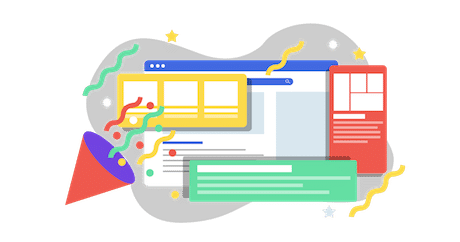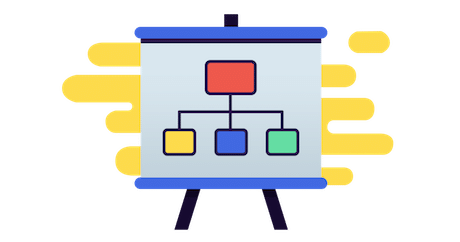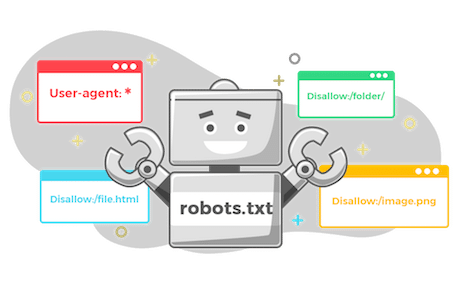Google is reshaping search with AI-generated answers.
These new AI Overviews appear above everything, ads, snippets, and organic results.
They summarize information from multiple sources, giving users instant answers without needing to click.
For SEOs, that changes the game.
You’re no longer just optimizing for rankings. You’re optimizing to be cited, quoted, and trusted by Google’s AI.
This guide breaks down how AI Overviews work and how to earn visibility in this new generative layer of the SERP.
How does your website score? Get a free instant audit that will uncover the biggest SEO issues affecting your site, and how to fix them.
Article Summary
- Google AI Overviews are generative summaries that appear above ads, featured snippets, and organic results
- They use real-time data and large language models like Gemini to generate original answers
- The AI pulls from multiple sources and cites them using icons or dropdowns in the overview box
- Content that gets clicked or engaged with is more likely to be cited in future AI responses
- Overviews show up mostly for informational queries, especially those starting with “how,” “what,” or “why”
- Clear formatting, strong headings, and schema markup help Google extract answers from your content
- Content with visible authorship, updated references, and high trust is favored, especially in sensitive topics
- SEO today means writing content that is easy to understand, reliable, and structured for machines to reuse
What Is AI Overview in Google Search?
Google’s AI Overview is a new search feature that utilizes generative AI to provide a concise answer at the top of the results page.
Initially launched in 2023 as the Search Generative Experience (SGE), it graduated from Labs and rolled out to general U.S. search results by mid-2024.
The feature gives users a quick, AI-generated summary, sometimes called an “AI answer,” along with source citations, all embedded directly into the results page.
The box, often called a Google AI overview, appears in “position zero,” above organic results and ads, giving users a quick snapshot plus source citations.
By default, they appear collapsed, offering just a few lines of AI-generated text and a “Show more” option.

When expanded, the AI Overview reveals several paragraphs of explanation, sometimes enriched with product listings, images, and linked citations, allowing users to dive deeper.
Unlike traditional featured snippets, which quote a single page, these summaries are synthesized by Google’s AI model using information from multiple sources.
The system doesn’t copy and paste; it uses a large language model to digest the most relevant content and generate a response in its own words.
This means each overview is a mini-article crafted on the fly, grounded in a range of authoritative web sources.
Citations still appear, often as link icons or under a “show more” dropdown, allowing users to verify or explore the original content.
AI Overviews act as Google’s built-in research assistant, delivering fast, conversational answers while still acknowledging the sources behind them.
They’re designed to satisfy the query on-page, and that’s exactly what makes them such a critical SEO priority.
How Does Google Generate AI Overviews?
Google’s AI Overviews aren’t just stitched-together guesses.
They’re built using real data, high computing power, innovative models, and a process called retrieval-augmented generation (RAG).
This method means the AI doesn’t rely solely on training data.
Data Sources and Large Language Models (LLMs)
So then, what data sources does Google AI use?
It retrieves fresh content from Google’s search index and then uses a large language model to generate a coherent response in real time.

The process starts when a user submits a query.
Google identifies the most relevant web pages, structured data, or Knowledge Graph entries that might answer the question.
These sources are passed into a custom version of Gemini, Google’s advanced generative AI model.
Gemini analyzes, extracts, and combines the key points, crafting a readable summary that blends accuracy with clarity.
Once the summary is written, Google attaches citations, to provide transparency and traceability.
This is called “grounding” the content.
The model also learns from user interactions. If people click on specific citations more than others, future overviews may prioritize those sources.
This feedback loop means content that performs well can be featured more often, even if it’s not the highest-ranking page in traditional SERPs.
By combining real-time data with language generation,Google aims to deliver accurate, up-to-date answers that reduce hallucinations and enhance user trust.
The Role of Generative AI and Bard
The technology behind Google’s AI Overviews is powered by the same generative AI capabilities that once lived inside Google Bard.
Bard began as Google’s standalone AI chatbot, built on earlier large language models (LLMs) like PaLM, and was designed to answer questions in a conversational format.
Over time, those capabilities were merged into Google Search, powering AI Overviews with a Bard-like brain under the hood.
Today, that brain is Gemini.
Gemini is Google’s latest large language model, designed for multi-step reasoning, multimodality, and natural language generation.
The model analyzes a user’s query, scans trusted sources, and composes a clean, AI-written summary.
Unlike Bard, which encourages back-and-forth conversation, AI Overviews are optimized for speed and precision.
Where and When Do AI Overviews Appear?
Google’s AI Overviews don’t appear for every query, and they’re not yet visible to all users.
Their appearance depends on factors like location, language, account status, and query type.
Countries and Language Rollout
The rollout began in 2023 with Search Labs, initially limited to opted-in users in the United States who searched in English.
By mid-2024, AI Overviews were turned on by default for most U.S. users.
Google reported that hundreds of millions of users would gain access immediately, with global expansion planned to continue through the end of 2024.
That expansion moved quickly.
By late 2023, AI Overviews had already been tested in over 120 countries, supporting languages such as Spanish, Portuguese, Japanese, Korean, Hindi, and Indonesian.
As of 2025, AI Overviews are live in many major markets, including parts of Europe, Asia, and Latin America.
In the EU, their rollout came with guardrails, AI Overviews were initially limited to signed-in users aged 18 and above to comply with regional regulations.
While some users can still toggle off generative results with the “Web results only” filter, AI Overviews are becoming the default interface.
In most English-speaking regions, they now appear automatically, especially for informational queries.
Types of Search Queries Triggering AI Overviews
AI Overviews don’t trigger on every query, they appear where synthesis adds value.
Google prioritizes them for broad, informational queries that benefit from a multi-source summary.
Searches that begin with “how,” “what,” or “why” are the most likely to return an AI Overview.
Topics like comparisons, definitions, advice, or best practices are frequent triggers.
For example, English queries like “best travel credit cards” or “how to sleep better” often pull an AI-generated response.

These queries require nuance, explanation, and multiple perspectives, exactly what Google’s AI is designed to deliver.
By contrast, simple navigational searches such as “Facebook login” or local queries like “coffee near me” rarely generate AI Overviews.
They don’t need synthesis; they need a single action or destination.
Third-party studies support this split.
By late 2024, AI Overviews were appearing on about 59% of informational queries but only 19% of commercial ones.
That’s a significant signal for SEOs: Content that educates is more likely to get surfaced by AI.
There’s also a strong correlation between featured snippet triggers and AI Overview appearances.
If your query used to show a snippet, it probably now shows an AI Overview, or both.
You might be asking, does AI Overview replace featured snippets? No.
Featured snippets haven’t disappeared entirely, but they now often live beneath or alongside the AI-generated box.
Conversely, queries that trigger local packs, site links, or branded site navigation rarely generate AI answers.
And for YMYL (Your Money or Your Life) queries, Google is more cautious.
In one study, finance-related queries showed AI Overviews just 5% of the time, while health-related queries triggered them about 63% of the time.
That’s because Google balances usefulness with risk, AI Overviews appear where accuracy and user safety can be maintained.
How AI Overview Affects Search Behavior
AI Overviews are already changing how people search, and how they click.
For users, these summaries offer instant clarity.
Instead of opening multiple tabs, they get a consolidated answer right at the top of the page.
This convenience leads to fewer clicks on traditional organic results.
In Google’s testing, users reported feeling more satisfied when AI Overviews were present.
They can grasp a topic more quickly, explore follow-ups, and move on, all within one SERP.
The AI even suggests related questions, acting like a built-in research assistant.
But for site owners and SEOs, the rise of zero-click behavior is hard to ignore.
If the AI answers the question up front, users may never scroll to the organic links below.
Publishers have already reported traffic declines, especially on how-to, reference, and Q&A-style content.
Some fear that Google is using their content to answer questions, without sending users back to their site.
It claims that cited sources within AI Overviews can earn more visibility and clicks than plain organic links.
When a user sees “according to Example.com…” in the AI box, it may prompt curiosity — and a visit.
Google also argues that AI Overviews include a wider variety of sources, giving smaller sites a chance to appear where they wouldn’t usually rank in the top three.
So the traffic impact is mixed.
Some pages lose clicks. Others gain brand exposure or become cited more often.
How to Optimize Content for Google AI Overviews
Optimizing for AI Overviews isn’t about gaming the system.
It’s about creating content that Google’s AI wants to cite.
You’re not just aiming to rank high; you’re aiming to become the building block of the answer itself.
This means SEO strategy now overlaps with content clarity, structure, and trust.
Let’s walk through the steps to prepare your content.
Structured Content and Schema
The structure is everything.
Google’s AI scans your page, looking for clear sections, concise answers, and skimmable formats.
Use headings, subheadings, and short paragraphs that let the model break your content into logical chunks.
Treat each section like a mini FAQ, a self-contained answer with context.
Lists, bullet points, and step-by-step instructions are highly favored.
Similarly, schema types like FAQPage, HowTo, and Article help Google recognize the layout of your content at scale.
This isn’t just about featured snippets.
AI Overviews also rely on structure to determine what belongs where in the summary.
If your content is cleanly sectioned and properly marked up, Google’s AI can more easily identify it as a source.
Writing for Clarity and Context
Clarity wins.
When the AI is building a response, it looks for content that directly answers the question, within the first few lines.
Put the definition, stat, or conclusion first.
Follow it up with supporting context or nuance.
Avoid bloated intros, metaphors, or off-topic digressions.
Use simple language and break ideas into one clear thought per paragraph.
AI systems are trained on human-readable content, so a natural, conversational tone is also beneficial.
Explain terms, define acronyms, and use cue phrases like “for example” or “in contrast” to guide the model.
Each paragraph should work on its own.
If the AI lifts just one piece from your page, it should still make sense out of context.
E-E-A-T Considerations
Trust still matters.
Google’s AI looks for sources that show Experience, Expertise, Authoritativeness, and Trustworthiness (E-E-A-T).
This means your content should have visible authorship, transparent sourcing, and up-to-date references.
If you’re a subject-matter expert, say so, and show it through credentials or contributor bios.
Link out to credible sources and support any claims with relevant data or references.
Keep your content fresh. Google’s AI values recency and will deprioritize stale answers.
Pages with strong engagement, backlinks, or domain authority are more likely to be cited in Overviews.
Want expert help?
Explore our SEO services tailored for AI-driven visibility.

AI Overview vs. Featured Snippets: What’s the Difference?
AI Overviews and featured snippets both sit at the top of Google’s results, but they’re built in entirely different ways.
A featured snippet is a direct excerpt from a single page, usually shown as a paragraph, list, or table.

Example of a featured snippet
It quotes one source verbatim and includes a link back to that page.
In contrast, an AI Overview is a summary written by Google’s generative model.
It’s not copied from any one page. Instead, it blends content from multiple sources into a single, AI-written response.
Featured snippets are static. AI Overviews are dynamic and change depending on query intent, available sources, and user context.
Citations also differ.
Snippets show a single source link directly under the box.
AI Overviews display multiple citations, often as small icons or expandable cards below or beside the summary.
These citations link out to the sources, giving credit without assigning the entire answer to one site.
AI Overviews are also longer.
A snippet might be 2-4 sentences. An expanded overview can include multiple paragraphs, images, lists, and related queries.
Some AI Overviews stay collapsed behind a “Show more” toggle, while snippets are always fully visible.
They also serve different purposes.
Snippets are meant to highlight the top-ranking result. AI Overviews aim to summarize the broader conversation — drawing from trusted, fresh ideas, and diverse perspectives.
They can both appear for the same query, but in most cases, the AI Overview takes precedence.
And if the AI Overview is present, users may not even notice the snippet buried below.
Controversies and Concerns
AI Overviews aren’t just a product update, they’ve stirred genuine concern across the publishing world.
The biggest fear is traffic loss.
If Google provides users with the answer upfront, fewer people click through to the sources.
And the data backs it up.
Some industry estimates from 2024 projected a drop in organic traffic of between 20% and 60% due to the widespread use of AI-generated answers.
News publishers were hit especially hard.
After AI Overviews launched, several editorial sites reported significant declines in page views, even for high-ranking content.
The core issue? Google’s AI may summarize the article so effectively that users never feel the need to visit the site.
This has sparked conversations around revenue sharing and content licensing.
Some AI chatbot companies have already struck deals to pay publishers for the use of their content.
Now, SEOs are asking: Will Google do the same?
Google’s official response has been cautious.
They emphasize that citations are included and that AI Overviews often drive qualified traffic to the source.
Still, skepticism remains.
Publishers worry that the long-term impact will be fewer clicks, less ad revenue, and a content ecosystem that’s harder to sustain.
Accuracy is another concern.
Many people ask questions like “How accurate is Google AI Overview?”
AI models, even Google’s, can hallucinate, misstate facts, or summarize things out of context.

Google has built various guardrails, and the AI Overview comes with a disclaimer that it “can and will make mistakes.”
There are philosophical concerns, too.
Some argue that AI Overviews undermine the open web by providing users with all the value without ever directing them to the source.
This is especially detrimental to smaller sites, creators, and niche publishers that rely on traffic to grow.
Google insists it’s trying to strike a balance, serving user needs while supporting the broader ecosystem.
But the AI-powered SERP comes with trade-offs.
For now, SEOs must navigate the tension between visibility and ownership, trusting that precise citations and strong content still matter.
What’s Next for AI in Google Search?
Google’s AI Overview is only the beginning.
Over the next few years, expect AI answers to become more personalized, visual, and interactive, making richer answers in a broad range of formats.
Google has already teased adjustable summaries, where users can toggle between simplified and in-depth versions of an answer.
This gives users more control while keeping them inside the AI-powered SERP.
Gemini, the model behind AI Overviews, is also multimodal, meaning it can interpret not only text but also original images, code, and more.
That opens the door to overviews that include image analysis, video summaries, or context-aware visual answers.
Google is also experimenting with AI enhancements to other verticals.

In Shopping, AI Overviews now summarize product specs, reviews, and comparisons using live data.
In Maps, Artificial Intelligence (AI) suggests personalized lists, like “best vintage shops near me” based on review analysis and place data.
This turns Google from a list of links into a proactive assistant that can plan trips, recommend products, or generate itineraries.
And it doesn’t stop there.
Search is slowly blending into conversation.
Google has tested follow-up prompts, chat-like interactions, and AI-organized result pages,a sign that traditional link-first SERPs may become the fallback, not the default.
We may soon ask complex questions, get AI-crafted overviews, ask a follow-up, and refine results, all within one fluid session.
For SEOs, this means the surface area of visibility is growing, and splintering.
Optimizing just for blue links won’t be enough.
You’ll need to show up in Shopping AI, Maps AI, YouTube summaries, and even visual or spoken responses.
That’s why Search Everywhere Optimization is no longer optional – it’s the strategy that keeps your brand visible wherever answers appear.
This includes platforms beyond Google, like ChatGPT, Perplexity, Amazon, TikTok, and more.
Want to Dive Deeper?
Download our step-by-step guide and master the tactics that keep you visible across every AI-powered search platform.

AI Overviews are Here to Stay
Google’s move into generative AI search is reshaping SEO, but it’s not killing it.
It’s shifting the goal from ranking first to being the answer.
AI Overviews have changed what it means to be visible.
Now, visibility means being quoted, cited, and trusted by the AI, even if users never click through.
That shift demands a new playbook.
Yes, you still need high-quality, user-focused content.
But now you also need clear structure, tight phrasing, strong E-E-A-T signals, and markup that AI features can interpret and reuse.
SEO isn’t dead, it’s evolving into something more comprehensive: a blend of editorial, technical, and strategic positioning for AI systems.
The brands that adapt early will build compound visibility.











Leave a Reply